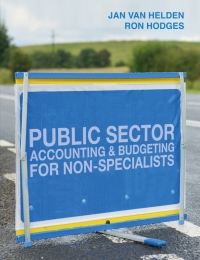Question
Petersen Pottery Just outside of Elkins, West Virginia, high in the Appalachian Mountains, Clive Petersen had been making ceramic bathroom fixtures since 1980. Petersen fixtures
Petersen Pottery
Just outside of Elkins, West Virginia, high in the Appalachian Mountains, Clive Petersen had been making ceramic bathroom fixtures since 1980. Petersen fixtures (commonly called toilets) had become known over the years for their distinctive custom features, and their long life. Petersen Pottery had grown from a two-man operation in 1990 to the present group of 20 master potters located in two huge old warehouses, converted from World War II storage depots. By 2020 Clives business had expanded to the point where he felt he must institute some type of formal, systematic controls over his cost. Modern cost systems were becoming a prerequisite for the bank loans, which funded Clives expansion and continuing operations.
The manufacture of ceramic fixtures consists of three processes: molding, glazing, and firing. Raw clay is first molded into the desired shape and baked in a kiln to harden. It is then coated with a glaze mixture to give it its color and characteristic smooth finish. The fixture is then baked again (fired) to harden and fix the glaze to the clay. The finished product is then shipped to the various wholesale outlets around the state. The molding and firing of ceramics, although not highly complex, requires an experienced potter to assure the quality of the product. Excessive heat or excessive time in the kiln can ruin a fixture. The mixing and application of the glaze also requires a significant amount of skill. However, too much time cannot be spent on the molding and glazing processes because delays can cause a bottleneck in the whole production process.
The need for better cost control, coupled with a need for better overall production scheduling to meet the increases in demand, led to Clive Petersen to adopt a standard cost system. After extended discussions with his most experienced master potters, Clive and his new accountant arrived at the following cost standards:
Materials
Raw Clay 25 lb @ $.95/lb $23.75
Glazing Mix 5 lb @ $.75/lb 3.75
Direct Labor
Molding 1 hr @ $15/hr 15.00
Glazing .5 hr @ $15/hr 7.50
______________________________________________________
Variable Overhead
Fixed Overhead
ANALYSIS OF OPERATIONS
After 6 months of operations using the new cost system Clive was disturbed over the lack of attention paid to the standards. He felt that the potters were just too set in their ways to pay any attention to the confusing new system. As one of the potters observed, I have been making these fixtures a lot longer than these new ideas have been around, and I dont see how a bunch of numbers that some hot-shot accountant puts together are going to help me make any better toilets. The result was that although the standards existed, they were seldom met.
In reviewing the June production results, the following actual costs for 1,145 fixtures were noted:
Materials Purchased
Clay 30,000 lb @ $ .92/lb
Glaze 6,000 lb @ $ .78/lb
Materials Used
Clay 28,900 lb
Glaze 5,900 lb
Direct Labor
Molding 1,200 hr @ $15.25/hr
Glazing 600 hr @ $15.00/hr
Before proceeding with further analysis, Clive met with his most experienced master potter, Jim Sedgefield, to discuss the continued variances from the standards. He was seriously considering implementing a standard metal mold system to replace the existing manual system of shaping fixtures. When Sedgefield arrived, Clive explained the problem: Jim, you insist the standards are reasonable and yet you never meet them. It looks like we will have unfavorable variances again this month. Sedgefield was not impressed. Well Clive, he said, I dont understand this system at all. Why dont you ask that fast-talking accountant to explain the variances? He seems to know what these numbers mean. All I know is, we seemed to spend all month fussing with that new brand of clay you said was going to be cheaper for us.
QUESTIONS
1. Analyze cost performance for June. Calculate all important variances.
2. What conclusions are suggested regarding cost performance for the month?
3. Write or type a rough draft of a report to Clive detailing the major problems you find with the system or operations. You must have three presented in order of importance with one paragraph for each.
Step by Step Solution
There are 3 Steps involved in it
Step: 1

Get Instant Access to Expert-Tailored Solutions
See step-by-step solutions with expert insights and AI powered tools for academic success
Step: 2

Step: 3

Ace Your Homework with AI
Get the answers you need in no time with our AI-driven, step-by-step assistance
Get Started


